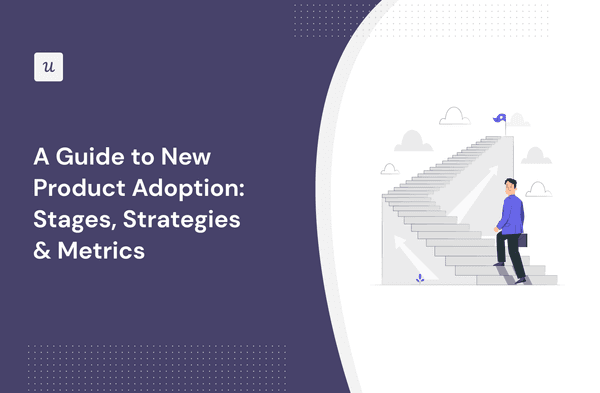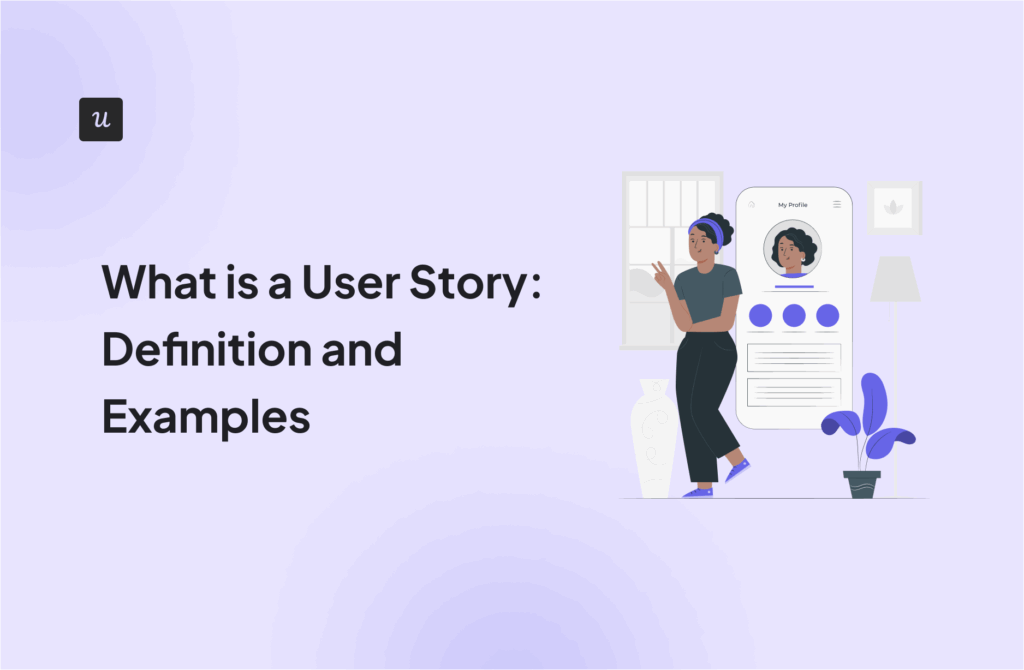
Looking for the best product marketing campaigns to inspire your next project?
Search no further!
We’ve curated 16 of the most innovative product campaigns from industry leaders like Userpilot, HubSpot, and Spotify, among others, that will spark your creativity and help you create campaigns that drive product growth.
Try Userpilot Now
See Why 1,000+ Teams Choose Userpilot

What is product marketing?
Product marketing is the process of introducing new offerings to potential customers.
Essentially, it’s about understanding the buyer’s pain points and using strategic messaging to position the product as a solution to their challenges.
How to create a successful product marketing strategy?
Follow these steps:
- Set product marketing goals: A clear goal sets the foundation for a great product marketing strategy and guides your efforts. An example of a goal can be increasing brand awareness, driving product expansion, or boosting new feature adoption.
- Create user personas: Develop detailed representations of your ideal customers, including their demographics, interests, pain points, and buying behaviors. Having thoroughly researched user personas at your disposal helps tailor your messaging and positioning to resonate with your target audience.
- Define your positioning and messaging: Create a positioning statement that clearly articulates your product’s unique value proposition against others in the market. Then based on it, create a messaging strategy that communicates to customers the value and benefits of your product.
- Make a SWOT analysis: Conduct a comprehensive analysis of your product’s strengths, weaknesses, opportunities, and threats. This step helps you identify areas where you can leverage your advantages, address vulnerabilities, capitalize on market opportunities, and mitigate potential risks.
- Develop product marketing campaign ideas with your team: Start with brainstorming sessions to gather a wide range of ideas, considering various channels and tactics to reach your audience. Evaluate each idea based on its potential impact, feasibility, and alignment with your overall product strategy.
16 Best product marketing campaigns to inspire you
The theory is great, but seeing real-world success is even better. This section shows you product marketing examples and why they work.
1. Userpilot reaches its target audience through product-led content
Product-led content (PLG) is a marketing approach where you create educational content for your prospective customers, showing them how their challenges can be resolved using your product.
Userpilot, an all-in-one product growth platform, excels at this kind of content.
For example, one of Userpilot’s main functionalities is UI patterns that can be used to create onboarding tours.
You’ll find several Userpilot blog posts covering onboarding best practices, trends, and strategies that seamlessly integrate Userpilot and demonstrate how the platform’s features can help implement specific strategies.

2. Moz leverages “engineering as marketing” for product-led growth
Engineering as marketing is the practice of using your engineering resources to create free tools that your prospective customers will benefit from.
Moz implements this strategy by creating free SEO tools, such as the Keyword Explorer, Link Explorer, and Domain Analysis tool. The quality and usefulness of these free tools establish Moz as a trusted authority in the SEO space.
Users who find value in these tools are more likely to consider Moz when they’re ready to invest in more comprehensive SEO solutions.

3. Userpilot hosts industry-relevant webinars to raise brand awareness
Webinars allow you to connect with a global audience and humanize your brand through face-to-face interactions.
Userpilot runs webinars focused on themes such as user onboarding, product adoption, and user experience optimization that often feature industry experts and give users valuable insights from their experience.
By hosting these informative sessions, Userpilot positions itself as a thought leader and attracts potential customers interested in driving product growth.

4. Ahrefs showcases its product through strategic video marketing
Ahrefs creates a wide range of educational videos that teach users how to use its tools effectively.
These tutorials cover everything from basic keyword research to advanced SEO strategies, empowering users to get the most out of Ahrefs’ products.
By providing clear, actionable insights and showcasing real-world applications, Ahrefs’ video marketing efforts build credibility and trust with its audience.

5. Calendly markets the product through viral growth loops
A growth loop is a self-sustaining system in which one user’s actions naturally bring in more users to the product.
Calendly implements this strategy well: When a user sends a Calendly link to schedule a meeting, the recipient gets exposure to the product and uses it to accept the invitation, even without having an account.
Once they get a firsthand experience of the product’s value and see how easy it is to select a time slot and book a meeting, they may even create an account themselves.
The new user then repeats the cycle, inviting others to schedule meetings, creating a viral loop that continuously brings in new users through organic word-of-mouth and user interactions.

6. Userpilot shares case studies throughout product marketing campaigns
Case studies are a powerful form of social proof because they provide tangible evidence of a product’s effectiveness.
Userpilot strategically incorporates case studies in its marketing materials to build credibility and trust with potential users. These case studies typically highlight:
- Customer challenges.
- Implementation and solution.
- Results and benefits.
- Customer quotes and testimonials.

7. Dropbox invests in customer loyalty programs to drive word-of-mouth
Dropbox’s loyalty program rewards existing users with extra storage space for inviting new users to the platform.
What makes the program so effective is that both the referrer and the referee receive a reward, further motivating users to invite others.

8. HubSpot offers certifications as part of its product marketing strategy
HubSpot offers free educational courses for inbound marketing paired with an industry-recognizable certificate.
The value they deliver through these up-to-date training positions them as industry thought leaders while giving new users a chance to learn about their products.

9. Grammarly uses contextual email marketing to drive product growth
Grammarly’s contextual email marketing strategy is a prime example of how personalized communication can drive user engagement.
The writing tool leverages user behavior data to craft highly targeted emails that provide a detailed overview of each user’s writing activity, including the accuracy score and common mistakes corrected.
Grammarly also acknowledges user progress and offers tailored tips for improvement, ultimately encouraging them to use the product more frequently.

10. Userpilot runs marketing campaigns on Product Hunt after new releases
Product Hunt is an online platform where makers and innovators can launch their new products and gain exposure to a community of tech enthusiasts, early adopters, investors, and journalists.
Launching on Product Hunt can generate traction for a product, create buzz, and even collect early feedback.
That’s why Userpilot launched its brand-new AI-powered writing assistant on PH, and the results didn’t disappoint.

11. Userpilot markets new features to existing customers with in-app messages
While marketing your releases on third-party platforms is an effective way to attract new users, promoting them in-app helps existing customers discover and adopt them quickly.
For example, Userpilot uses in-app messaging, such as slideouts, to announce new features and prompt users to try them.

12. Loom triggers upsell messages at high-intent moments
High-intent moments occur when users are actively engaged with a product and demonstrate a clear need for additional functionalities. This is the best time to trigger upsell messages, as doing so randomly may disrupt user workflow and cause friction.
Loom effectively employs this upselling technique by monitoring user activity and identifying key moments. When a user reaches their 5-minute video recording limit, Loom triggers a message suggesting they upgrade and continue recording.

13. Userpilot organizes the annual “Product Drive” conference
Event marketing is a powerful tool in the product marketer’s arsenal.
Userpilot’s annual Product Drive is a good example of event marketing in action. It’s a virtual event that brings together product marketers, UX designers, customer success professionals, and other industry leaders to share best practices for building and scaling products.
The conference features keynote speakers, panel discussions, workshops, and networking opportunities, all focused on topics relevant to Userpilot’s target audience.

14. Volkswagen allows potential customers to build a customized virtual car
Volkswagen utilizes an interactive “Build Your Car” feature on its website, allowing potential customers to design a customized virtual car. This tool lets users select various options like model, color, features, and accessories, providing a visual preview of the car along with the total price.
By enabling customers to personalize their cars and visualize the final product, Volkswagen effectively bridges the gap between awareness and purchase, enhancing the user experience.

15. Spotify runs a personalized “Spotify Wrapped” yearly campaign
The “Spotify Wrapped” campaign provides users with a personalized summary of their music listening habits over the previous year.
The campaign leverages customer data to compile detailed reports on each listener’s top artists, songs, genres, and total listening time.
Spotify Wrapped is also easily shareable on social media, allowing users to showcase their music preferences and achievements to their friends. This social aspect generates widespread visibility and creates a viral effect as millions of users share their Wrapped summaries each year.

16. Cola’s “Share a Coke” campaign is one of the best product marketing examples
In 2011, Coca-Cola replaced the brand’s logo on bottles with popular first names, and this simple yet ingenious move allowed consumers to connect with the brand on a more emotional level.
This personalized approach encouraged people to find and share bottles with their names or the names of friends and family.
It was also heavily promoted on social media, leading to widespread user-generated content and increased sales among young adults.

How can Userpilot help you execute a product marketing campaign?
Userpilot is a growth platform that enables product teams to optimize product usage with targeted, data-driven in-app experiences.
Here’s how Userpilot can help:
Use different UI patterns for in-app marketing campaigns
Userpilot provides an array of UI patterns you can use to create engaging in-app marketing campaigns. These patterns include modals, tooltips, slideouts, checklists, and banners, each serving different purposes.
For example, you can use modals to notify users of a limited-time discount. Meanwhile, tooltips can be used to announce minor product updates, such as interface changes.

Trigger in-app messages contextually to the right user at the right time
Remember the example we gave about Loom triggering upsell messages at high-intent moments? Userpilot makes it easy to do the same.
You can trigger in-app messages based on user events like clicks, hovers, or text infills.
Userpilot also lets you segment users based on a number of attributes such as behavior, survey response, and location and send highly personalized messages.

Run product experiments and analyze results
Userpilot empowers you to run A/B and multivariate tests to optimize your in-app campaigns.
You can experiment with different UI patterns, message variations, or colors to see what resonates best with your users and improve your campaigns upon the results.

Conclusion
When it comes to product marketing, there are no hard and fast rules. The most successful campaigns are those that are creative, engaging, and data-driven.
Ready to create data-driven in-app marketing campaigns? Book a demo and we will explain how you can do this with Userpilot.








